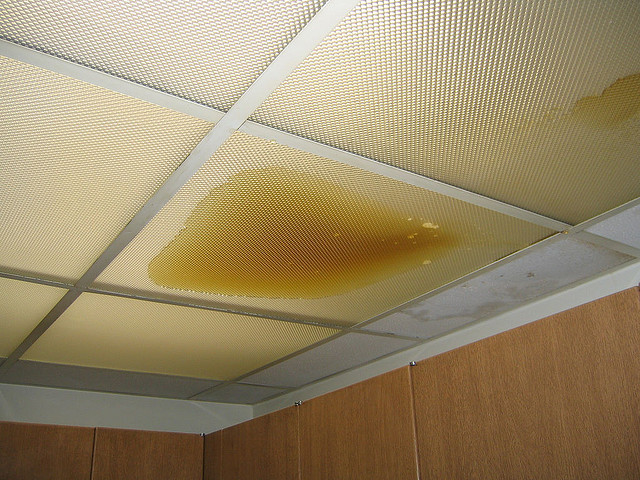Just how to Examine If Your House Has a Concealed Leak
Just how to Examine If Your House Has a Concealed Leak
Blog Article
This post down below pertaining to Detecting hidden plumbing leaks is immensely fascinating. Give it a go and make your own personal conclusions.

Early discovery of leaking water lines can mitigate a potential disaster. Some small water leakages might not be noticeable.
1. Check Out the Water Meter
Every home has a water meter. Checking it is a surefire manner in which aids you discover leaks. For beginners, shut off all the water sources. Ensure nobody will certainly flush, utilize the tap, shower, run the cleaning equipment or dishwashing machine. From there, go to the meter and watch if it will certainly alter. Considering that no person is utilizing it, there need to be no movements. If it moves, that suggests a fast-moving leak. If you identify no adjustments, wait a hr or 2 and examine back once again. This suggests you may have a slow leak that can also be underground.
2. Examine Water Intake
Evaluate your water costs as well as track your water intake. As the one paying it, you need to notice if there are any disparities. If you find sudden changes, in spite of your usage being the same, it indicates that you have leakages in your plumbing system. Bear in mind, your water expense need to fall under the exact same range every month. An unexpected spike in your bill indicates a fast-moving leakage.
On the other hand, a constant boost monthly, despite having the exact same habits, shows you have a slow-moving leak that's also gradually intensifying. Call a plumber to completely check your home, specifically if you feel a warm area on your floor with piping beneath.
3. Do a Food Coloring Test
When it comes to water usage, 30% comes from commodes. Test to see if they are running effectively. Drop flecks of food color in the storage tank as well as wait 10 minutes. If the color in some way infiltrates your bowl during that time without flushing, there's a leak between the storage tank and also bowl.
4. Asses Exterior Lines
Do not forget to inspect your exterior water lines too. Should water leak out of the connection, you have a loosened rubber gasket. One small leakage can lose bunches of water and also spike your water costs.
5. Evaluate the situation and also check
Home owners must make it a routine to examine under the sink counters and also even inside cupboards for any kind of bad odor or mold and mildew growth. These two red flags indicate a leak so timely interest is called for. Doing regular examinations, even bi-annually, can save you from a major issue.
Check for stainings and damaging as many pipes and also home appliances have a life span. If you suspect dripping water lines in your plumbing system, do not wait for it to intensify.
Early detection of dripping water lines can reduce a potential disaster. Some small water leaks might not be noticeable. Examining it is a guaranteed means that aids you discover leaks. One little leak can squander heaps of water and surge your water costs.
If you suspect dripping water lines in your plumbing system, don't wait for it to escalate.
How to Know If Your Home Has a Hidden Leak
Water Meter Reveals Inexplicable Water Usage
If you’d like to test whether or not there’s a leak somewhere in your home, you can do this using your water meter. Here is how to conduct the test:
Don’t use any water in your home for at least 30 minutes; this also means not turning on faucets or water-using appliances.
Go outside, and check your water meter for activity.
If your water meter shows that there was activity, even though no one was using any water, this proves that there is a leak in your home.Visible Mold or Mildew Growth
Leaks behind walls create moist, dark environments that allow mold and mildew to grow and thrive. Eventually, you might see mold growth forming on the wall closest to a hidden leak.
If mold is growing in an area that receives a high amount of moisture, such as a bathroom, it may simply be an indication that better ventilation is needed. However, if you see mold growth on a wall or the ceiling in an area where you would not expect, you probably have a hidden leak.
Musty, Mildew Odor
Sometimes you might not be able to see the mold or mildew that is growing as a result of a leak. However, the smell can give the problem away just as easily. If you catch a whiff of something musty, there’s a good chance that old water is collecting somewhere in your home that you can’t see.
Stained/Warped Walls, Ceilings, or Floors
When your home soaks up water, a variety of red flags can become visible, including ceiling stains, bubbling drywall, warped walls, and sagging floors. While these issues can be caused by excess humidity, they can also be signs that a pipe or plumbing connection has started leaking behind your walls.
Inexplicably High Water Bill
After a while, you get a general sense for what your water bill should be. If you own a pool or sprinkler system, your bill will tend to be higher during summer. However, if you receive a water bill that seems especially high, and you can’t figure out what caused it, then you may have a hidden leak somewhere that’s increasing your bill.
https://www.plumbingjoint.com/blog/2019/july/how-to-know-if-your-home-has-a-hidden-leak/

I found that piece about Leaking water lines when doing a lookup on the search engines. Those who enjoyed reading our blog post please make sure you remember to pass it around. I praise you for your time. Don't hesitate to come visit our blog back soon.
Report this page